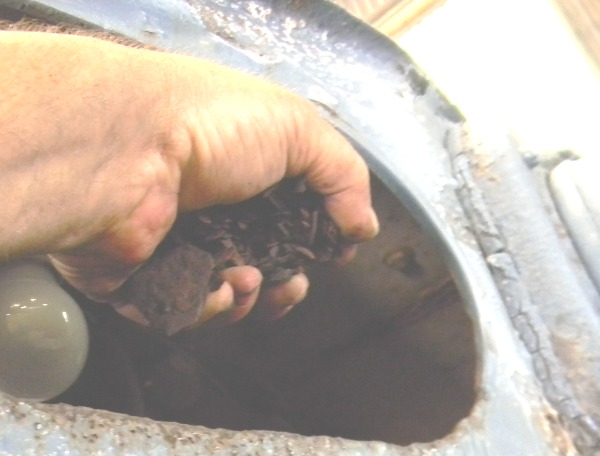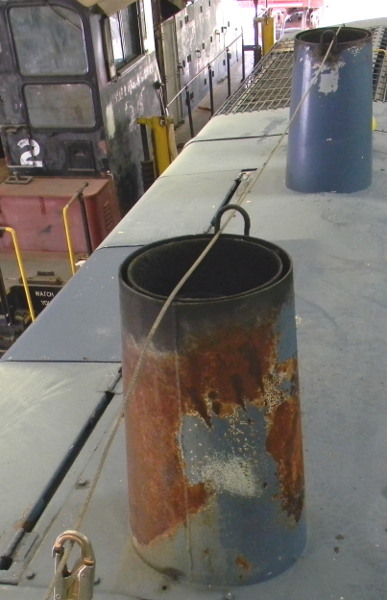You are hereBlack River Switcher 3
Black River Switcher 3
On the last page, I got a little ahead of myself; I want these pages to be somewhat of a tutorial. So here are some assorted methods I used. First, I wanted to have vector files drawn of each window, that way I could use them to draw the window on a piece of paper, using a plotter. This would leave me an exact line to cut with a large pair of scissors. After positioning it on the window, I could put a single width of 1 inch painter's tape on the edge of the rubber gasket, and fold it over the pre-cut paper.
Somehow I got the measurements wrong; maybe I was incorrectly insetting them, and figured that wrong. Whatever the case, I didn't draw them all with the plotter, instead I used a similar method. My thinking is that the speed gain is in having the paper cut to an exact size, that way one line of tape will do the job. I ended up folding an over sized piece of paper horizontally near the top. Then I cut a rectangle hole in it,; and used that with duct tape to hold the paper on the window. Then I traced the edge with a pencil, and cut it with scissors or a knife, the taped. This was easily good enough, as my only 36 inch plotter is an old pen plotter that's very particular what sort of paper I put into it.
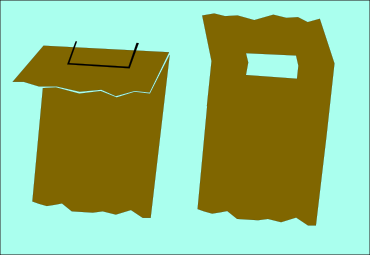 Hold the paper in place
Hold the paper in place
Next, look at these pictures of what I call “Bubble Rust”. It's worse than no paint at all. When a locomotive gets rained on, the painted surfaces, and even the bare steel surfaces will dry off a while after the rain stops. But these lifted paint places hold lots of water for a long time. So they're a priority to completely remove. Granted, sandblasting the whole locomotive would be nice, but there's a whole lot of electrical equipment inside, and I've been told the sand gets in everything. This article is about a basic paint job that prioritizes durability over appearance. Actually, it ended up looking quite nice, but that's because I have what I call “Visual Priority Zones”.
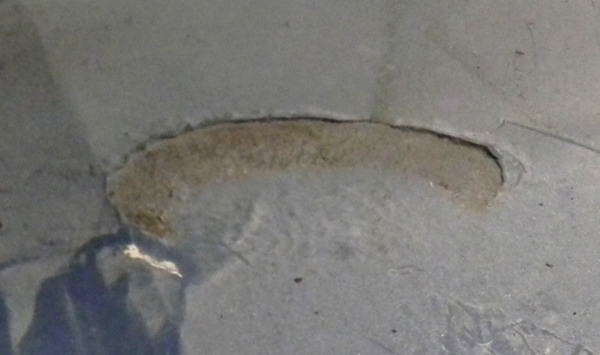
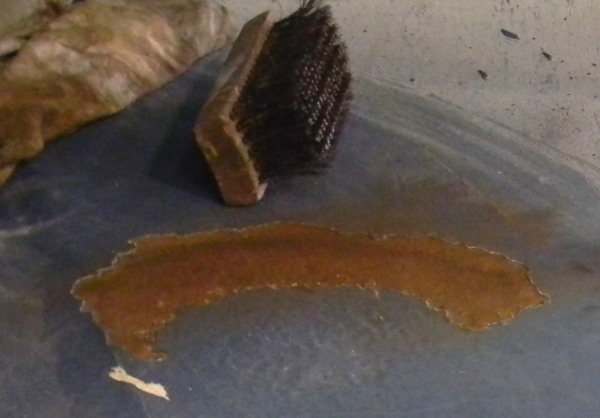
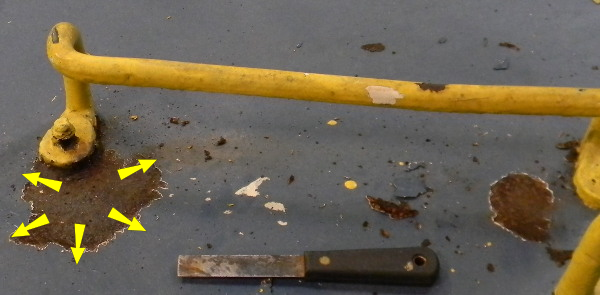 From the center outward
From the center outward
I do better body work in some areas, these are red in the diagram below. This is all assuming that budget is an issue, which it usually is. The roof, number 1, is very low visual priority wise. As long as the paint lasts, I don't spend time on body work up there at all. The next area down, the upper car body, is very important, visually. The lower car body, area 3, is actually less of a visual priority than the top of the air tank, 6, or the top of the fuel tank, area 8. That's because light reflects down from the lower car body to the walkboard, more than toward the viewer, as indicated by the blue arrow. Area 5 must be reasonably smooth, because Federal regulations mandate reflective tape there. The side of the cab is also important, but the diagram is to illustrate the method of prioritizing, you can figure the rest out.
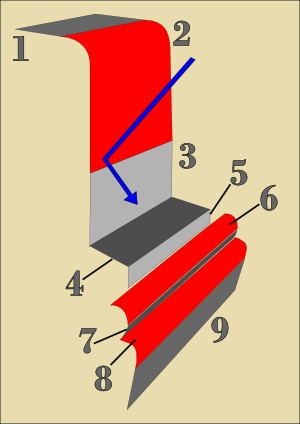 Visual priority zones
Visual priority zones
Before I forget, there is a way to paint the trucks, that looks great. It's what I call “Deep Black”. After the trucks have been pressure washed, and allowed to dry, instead of just walking along them, and painting what's close; take a lamp with you, and hold it in your free hand. This will show up a number of areas to paint, that you likely would have disregarded if you didn't have the lamp. Then, when you take the light away, and when the locomotive rolls outside for pictures, it's got fresh paint deep in the mechanical parts, it looks great. Deep Aluminum in this case.
A couple more notes; the number boards must have been out for a long time, there were about 10 handfuls of rusty steel flakes in there. Check for that. On top of this switcher, the smokestacks had steel loops welded to them. I was wondering how I could put a steel cable up there, and these helped a lot. I attached one end to the horn mounting bracket at the edge of the cab, and the other end of the cable bolted to the bell mounting bracket, just beyond the two smoke stacks in this picture. In the front of the picture, you can see what I use the cable for; it's to clip my safety harness to. The shop regulations, and maybe government regulations, mandate that all workers over 6 feet off the ground must wear a safety harness. My reasoning is that the harness is useless without something to clip to. I don't know what the government would say about my cable idea, so check that one out for yourself.
